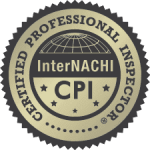Mold is a problem that can affect your health, your home’s structure, and its value. One of the most important things to remember about mold is that it can grow anywhere there is moisture, whether from a leaky pipe, a wet towel left on the floor, or condensation on a window. Mold can be black, white, green, or even pink and often has a musty smell.
Mold is a fungus that can grow indoors and outdoors and thrives in damp, warm, and humid environments. Mold can cause various health problems, including allergies, asthma, and respiratory infections. Therefore, looking for signs of mold in your home is essential.
Mold can cause severe health problems
When you see mold, it’s crucial to take action. Mold can cause health problems like asthma, infections, and even cancer. People exposed to mold may experience respiratory problems, skin irritation, and allergic reactions. In some cases, mold exposure can also lead to severe infections. If you suspect that you have mold in your home, it is vital to have the area tested by a professional. If mold is present, it is essential to take steps to remove it and prevent it from coming back. Otherwise, you may be putting your health at risk.
Mold has a distinct smell
The smell of mold is one of the most common signs that it’s present in your home. Mold tends to have a musty or earthy odor, but not all types of mold give off this distinct smell. For example, some indoor fungi may have a pleasant scent, like fruit or bread.
Mold can also be detected by its appearance. If you notice black spots and patches on your ceiling or walls, check them closely—these are often signs of mold growing behind the surface where it’s harder to see (and less likely to be cleaned off).
If you think there might be mold growing in your attic or basement, look at how damp these areas are: if they appear wetter than usual and have an unpleasant odor similar to dirt or rotting wood, then chances are good there could be mold present as well!
Black spots may not always be mold
That’s because black spots can also be dirt. Mold grows in the dark and on any surface. If you see tiny black spots growing around your home—especially in damp and humid areas (like basements)- you should take action immediately.
Mold can grow on wood, drywall, carpeting, furniture, and anything else made out of organic material, such as paper products like cardboard boxes or books with pages made from wood pulp which are high-humidity environments for mold to thrive. It’s important not to let these items sit around damp long enough for them to start growing mold spores.
New construction may still have mold
Mold can grow on the walls and floors of new construction. New homes, condos, and apartments are often constructed with concrete slabs on grade. These slabs are smooth, which makes it difficult for water to be absorbed by the soil below. Without proper drainage and drying out of these areas, mold may grow in your new home’s walls or floors.



